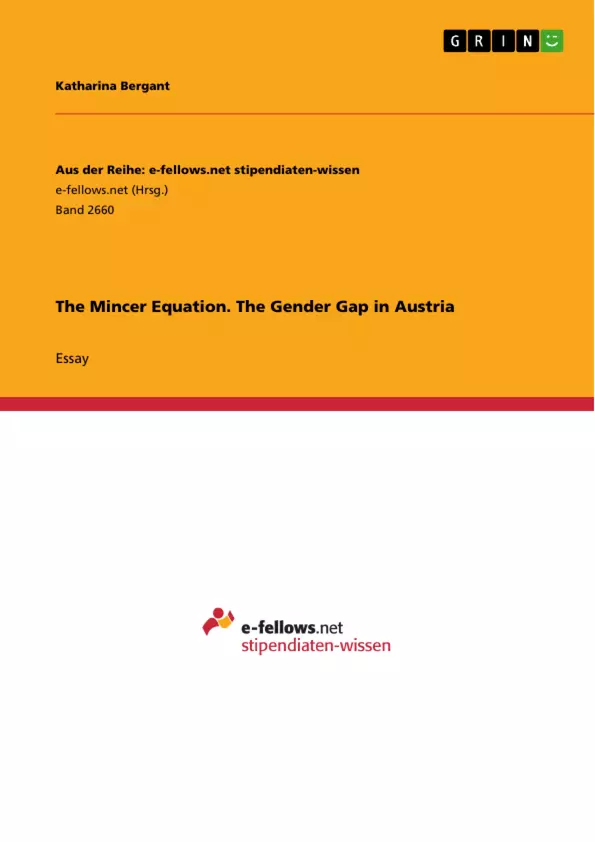Within this project, I examined the influence of different determinants on the hourly wages of Austrian employees. As a basis, I used a workhorse in Labour Economics, the Mincer Equation. I also extended the model by determinants that seem country specifically important for Austria according to previous literature: the gender gap and the east-west divide. However, first I test how good the original equation describes the data (EU SILC 2007) for Austria more than thirty years after its publication. Implying my new variables, I find that women earn about 26.2% less than men which results in a very big gender gap compared to other developed countries in the European Union. Surprisingly, I could not find any significant difference for the nine federal states which rejects my hypothesis of an east-west divide. Furthermore, the additional income due to increasing experience seems to be nearly linear as the impact of the squared term is extremely small.
Inhaltsverzeichnis (Table of Contents)
- Introduction
- Literature
- Data
- Models
- Results
- Model 1
- Model 2
- Model 3
- Conclusion
Zielsetzung und Themenschwerpunkte (Objectives and Key Themes)
This study aims to investigate the income structure of full-time employees in Austria, focusing on the impact of education and experience on hourly wages. The study also examines the "gender gap" in earnings and the potential "east-west divide" in income levels across Austrian federal states. The analysis is based on the Mincer Equation, a widely used model in labor economics.
- The influence of education and experience on hourly wages in Austria
- The gender gap in earnings and its potential explanations
- The impact of regional differences, particularly the "east-west divide," on income levels
- The applicability and limitations of the Mincer Equation in the Austrian context
- Comparison of different types of high school diplomas and their impact on income
Zusammenfassung der Kapitel (Chapter Summaries)
The introduction provides an overview of the research objectives, focusing on investigating income structure, gender gap, and regional differences in Austria. It introduces the Mincer Equation as the primary analytical tool and outlines the specific aspects of the model to be examined.
The literature review explores existing research on the gender gap and regional differences in Austria. It highlights the significant gender gap in Austria, particularly in comparison to other developed countries, and analyzes potential contributing factors such as differences in education, experience, and discrimination.
The chapter on data introduces the dataset used in the study, the EU SILC 2007, and provides a brief overview of its key characteristics.
The models section describes the three different specifications of the Mincer Equation used in the analysis.
The results section presents the findings of the estimations for each model, focusing on the coefficients of the explanatory variables and their significance.
The conclusion summarizes the key findings of the study, highlighting the impact of education, experience, gender, and region on hourly wages in Austria.
Schlüsselwörter (Keywords)
Mincer Equation, Austria, hourly wages, education, experience, gender gap, east-west divide, EU SILC, labor economics, human capital, gender discrimination, regional disparities, income structure.
- Quote paper
- Katharina Bergant (Author), 2014, The Mincer Equation. The Gender Gap in Austria, Munich, GRIN Verlag, https://www.grin.com/document/299953



